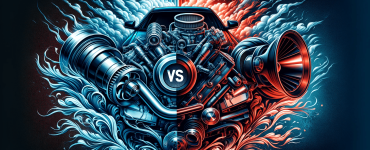Impact on fuel economy: Turbocharger vs Supercharger
Key Takeaways
| Aspect | Turbocharger | Supercharger |
|---|---|---|
| Impact on Fuel Economy | Variable | Generally lower |
| Power Generation | Exhaust-driven | Engine-driven |
| Installation Complexity | High | Moderate to High |
| Cost Efficiency | Moderate | Low |
| Boost Characteristics | Lag present | Instantaneous |
Unleashing the Power: Turbocharger vs. Supercharger
When it comes to augmenting your vehicle’s performance, the debate between the use of turbochargers and superchargers is as old as the quest for speed itself. Both are forced induction systems, designed to compress the air flowing into your engine. The more air you can get into your engine, the more fuel you can burn, and in turn, the more power you can produce. But when fuel economy enters the conversation, choosing the right option becomes a complex decision.
The Turbocharger: A Twist on Efficiency
Turbochargers are marvels of engineering that latch onto the power of your engine’s exhaust to boost performance. They offer a significant advantage when it comes to fuel economy under certain conditions due to their exhaust-driven nature. By recycling exhaust gases to spin the turbine, turbochargers can enhance the engine’s efficiency without the need for additional fuel. However, this efficiency can be variable. It largely depends on the driving style and the engine’s demand for power.
For a deeper dive into managing the heat produced by such high-performing components, consider exploring exhaust heat management in vehicles.
The Supercharger: Power at the Price of Efficiency
Superchargers, on the other hand, are mechanically driven by the engine itself, typically through a belt that runs off the crankshaft. This direct connection means power delivery is instant, eliminating the turbo lag associated with turbochargers. Yet, this immediacy comes at the cost of fuel efficiency. Since superchargers rely on the engine’s power to operate, they can reduce the overall miles per gallon (MPG) the vehicle can achieve.
Understanding the maintenance differences between these two systems is crucial for long-term performance sustainability.
Performance Gains vs. Fuel Economy: Finding Balance
The choice between a turbocharger and a supercharger is not just about power. It’s about finding the right balance between performance gains and fuel economy. This balance can be particularly nuanced when considering the installation costs, which can influence the total cost of ownership and the vehicle’s environmental footprint.
Looking at performance gains, turbochargers may offer more significant benefits due to their ability to function more efficiently at various RPMs. However, for those seeking immediate throttle response, superchargers might be the preferred choice despite their impact on fuel economy.
The Cost Factor: Installation and Maintenance
Installation costs can be a deciding factor. Typically, turbochargers are more complex to install due to their need for an exhaust manifold and a cooling system to manage the high temperatures they generate. Superchargers might have a higher upfront cost, but the installation process can be less intricate, depending on the type of supercharger chosen.

In Conclusion
Whether you opt for a turbocharger or a supercharger, each has its own set of benefits and trade-offs, especially when it comes to fuel economy. The key is to align your choice with your driving needs, performance expectations, and budget.
To get the most out of either system, ensure you understand the basics of turbo and supercharger to boost your engine’s performance effectively.




